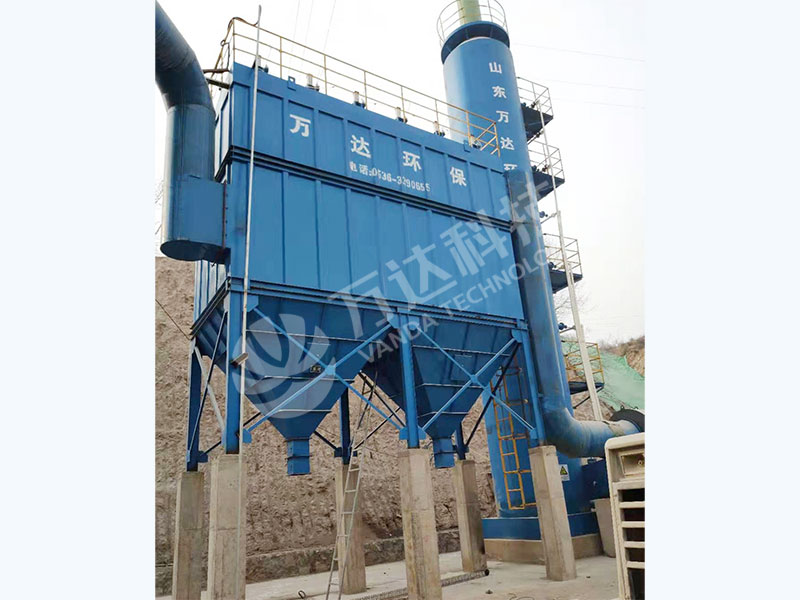Problems in ultra-low temperature denitrification operation
- Categories:Industry News
- Author:
- Origin:
- Time of issue:2022-11-21 13:37
- Views:
(Summary description)Problems in ultra-low temperature denitrification operation At present, China is facing the main problem of severe air pollution, represented by haze. Nitrogen oxides (NOx) are one of the important precursors of haze. The large-scale emission technology of nitrogen oxides not only brings problems such as acid rain and ozone layer destruction, but also easily forms a secondary particle in the complex chemical reaction process with NH3, SO2, and hydrocarbons in the atmosphere, which poses a great threat to human mental health and ecological protection and environmental management [1-2]. Therefore, strengthening the ability to control nitrogen oxides has become an urgent task for the sustainable development of China's market economy and society.
Problems in ultra-low temperature denitrification operation
(Summary description)Problems in ultra-low temperature denitrification operation
At present, China is facing the main problem of severe air pollution, represented by haze. Nitrogen oxides (NOx) are one of the important precursors of haze. The large-scale emission technology of nitrogen oxides not only brings problems such as acid rain and ozone layer destruction, but also easily forms a secondary particle in the complex chemical reaction process with NH3, SO2, and hydrocarbons in the atmosphere, which poses a great threat to human mental health and ecological protection and environmental management [1-2]. Therefore, strengthening the ability to control nitrogen oxides has become an urgent task for the sustainable development of China's market economy and society.
- Categories:Industry News
- Author:
- Origin:
- Time of issue:2022-11-21 13:37
- Views:
Problems in ultra-low temperature denitrification operation
At present, China is facing the main problem of severe air pollution, represented by haze. Nitrogen oxides (NOx) are one of the important precursors of haze. The large-scale emission technology of nitrogen oxides not only brings problems such as acid rain and ozone layer destruction, but also easily forms a secondary particle in the complex chemical reaction process with NH3, SO2, and hydrocarbons in the atmosphere, which poses a great threat to human mental health and ecological protection and environmental management [1-2]. Therefore, strengthening the ability to control nitrogen oxides has become an urgent task for the sustainable development of China's market economy and society.

Ultra low temperature denitrification is a mature, reliable, and effective denitrification technology. The basic principle is to add reducing agents (ammonia, ammonia, urea), reducing agents, and NOx to the flue gas within an appropriate temperature range in the presence of a catalyst, to produce harmless nitrogen and water, thereby achieving denitrification.
In the ultra-low temperature denitrification process, the catalyst is the core of the system. The selection and dosage of catalysts directly affect the denitrification effect. In engineering applications, different denitrification catalysts are selected according to different operating conditions. At present, the reaction temperatures of industrial denitrification catalysts are divided into high temperature (280-400 ° C), medium low temperature (180-280 ° C), and ultra-low temperature (100-180 ° C). Choosing appropriate denitrification catalysts is the key to stable operation and low energy consumption of SCR systems.
The manual adjustment of ultra-low temperature denitrification and ammonia injection is mainly achieved by controlling the outlet NOX concentration of ammonia injection in the flue gas through market regulation, reducing the standard concentration of NOX emissions in normal production of enterprises, and increasing the amount of ammonia injection. However, if there is no excessive ammonia injection, a large amount of ammonia will escape, and ammonia will react with SO3 and ammonium bisulfate, depositing on the surface of the economizer tube bundle, which will increase the pressure drop of the economizer. Therefore, the ammonia escape measurement method scale has very important guiding research significance for ammonia injection measurement technology. During the operation and management of silicon controlled denitrification, there is a certain deviation between the measured values of the ammonia escape meter, and the information of the measured values of ammonia escape is often fixed at a certain future value. The main part of the reason is that after economic operation, the temperature environment of the flue has changed, the measuring tube has shifted, and the light problem cannot be analyzed and measured accurately in a timely manner, resulting in inaccurate indication of the ammonia escape meter. In view of the actual working condition that the ammonia escape measurement time scale is not accurate, during the maintenance activities in September 2018, the existing ammonia escape measurement pipe was moved 500 mm to the air side of the flue, and the corresponding probe was moved to pay for the adjustment of lighting after our transformation. At the same time, a laser analyzer's in-situ measurement tube is continuously added to avoid displacement of the student's measurement tube and ensure the normal use of the ammonia escape meter in daily life.
The catalytic cracking reaction device can be regenerated through flue gas treatment process. Selective enhanced catalytic oxidation reduction SCR denitrification technology is adopted, and the catalyst mainly uses Topso company's DNXFCC denitrification catalyst. The operation and development of this computer machine equipment are stable. When the NOX concentration at the flue gas denitrification inlet is 1200 mg/m3, the NOX concentration in the flue gas can meet the requirements of NOX 150mg/m3 in the "Emission Control Standard for Industrial Environmental Pollutants in Petroleum Refining and Chemical Enterprises", and the denitrification efficiency can be higher than 85%. After 34 months of continuous system operation, the total pressure drop of the denitrification catalyst bed will meet the design work requirements of 2 kPa for students.
The main problem is that during standby production of the catalytic unit, the pressure of the regenerator decreases, resulting in an increase in the NOx concentration at the inlet of the SCR denitrification reactor, increasing the ultra-low temperature denitrification load. The measurement scale of ammonia escape is not accurate and cannot be used as a reference for ammonia injection volume. There is a risk of salt accumulation in the economizer.
Scan the QR code to read on your phone
Related News
-
Mechanical fossil ash kiln manufacturer: energy-saving lime kiln technology and characteristics
Mechanical fossil ash kiln manufacturer: energy-saving lime kiln technology and characteristics. Energy saving lime kiln is a type of kiln used for calcining limestone to produce quicklime. It is a new type of equipment that uses natural gas or coal gas as raw materials and air as auxiliary gas to heat clinker to produce qualified lime - Introduction to Three Separation High Efficiency Vortex Powder Sorter Manufacturer 01-09
- Mechanical Fossil Ash Kiln Manufacturer: Characteristics of Energy Saving Lime Kilns 12-29
- The powder selection machine of the powder selection machine manufacturer produces lime powder in the finished sand after powder selection 12-29
- What are the working mechanisms of centrifugal powder concentrators introduced by the powder concentrator manufacturer 12-19
Related Products
Vanda Technology
TEL:+86-536-3390655 / 400-869-0655
EMAIL:wdhbkj@163.com / WhatsApp: 8613869629198
ADDRESS:No. 128, Liuheng Road, Chengguan Street, Linqu County, Shandong Province, China

Follow us
© 2022 Shandong Wanda Environmental Protection Technology Co., Ltd All rights Reserved 鲁ICP备16006007号-15 SEO Powered by: 300.cn weifang
© 2022 Shandong Wanda Environmental Protection Technology Co., Ltd
All rights Reserved / SEO
鲁ICP备16006007号-15 Powered by: 300.cn weifang




 13869629198
13869629198

 点击咨询
点击咨询 